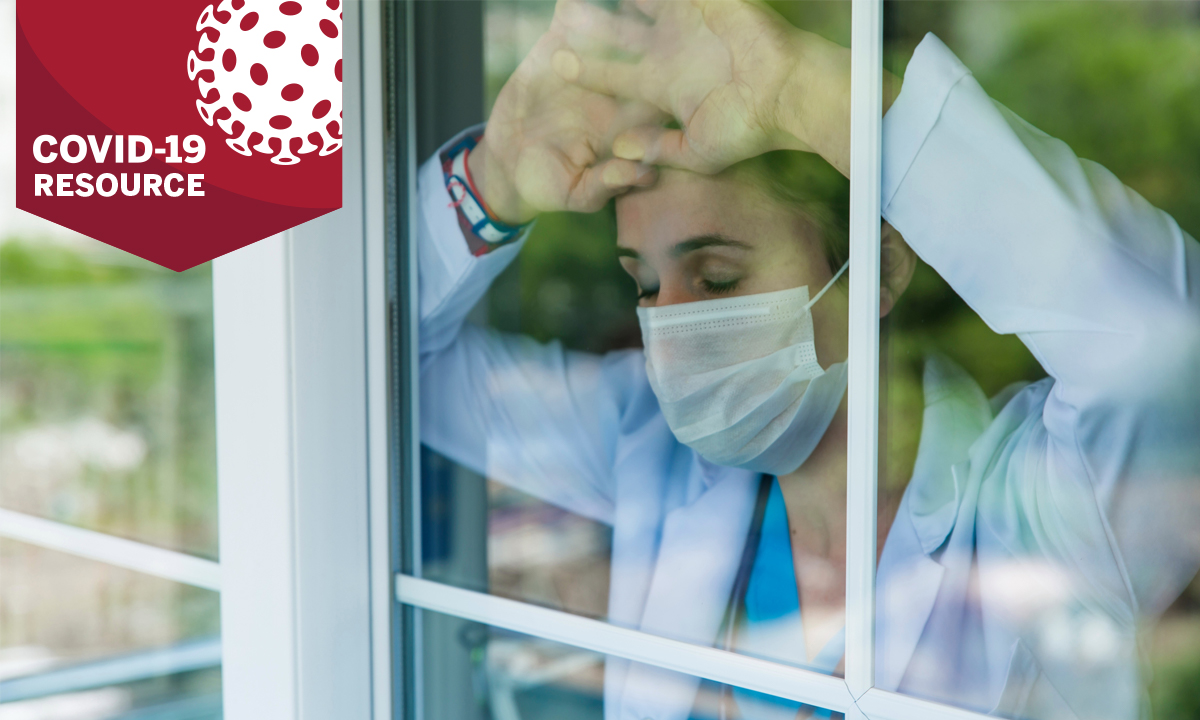
Information regarding COVID-19 has rapidly evolved. The content in this article provides a historical snapshot of events surrounding the date of posting.
As a hospitalist treating COVID-19 patients in the Boston area, a hotspot, I seem to live in two conflicting worlds. At the peak of the epidemic, I would go to work and witness the sickness and death that COVID can bring. Then, I would look on Facebook and be met with angry voices writing from locales that have seen little of COVID. People were angry about wearing masks, about staying at home, about job losses. And as the pandemic has worn on, they have become angry about haircuts and all things re-opening. What messages have I told people and what messages have helped?
On the Front Lines
Many folks have been touched by my dispatches from work. I have seen wards transformed from busy places full of visiting families, to halls of eerie silence with literally every bed filled with a COVID-positive patient, many on amounts of oxygen so high they would have been in an intensive care unit (ICU) under pre-COVID circumstances. I’d be paged all night about patients’ oxygen levels dropping to dangerous levels. I watched an elderly woman lay dying, a cruel hacking cough robbing her body of its last bit of energy, and a middle-aged grocery store worker with an oxygen mask telling me how he’s afraid he’s going to die now. I kept my hand on a dying man as I held the phone to his ear so his sister could say goodbye. As he took his final breaths, he had only myself and two nurses with him—who didn’t even know him—and photos of himself in happier times taped to his bed rails.
I took care of another patient who’d been admitted to the hospital after battling COVID at home for nearly two weeks but suddenly needed oxygen in escalating amounts. This patient had gotten COVID from a loved one who was already in the ICU and was on a ventilator. We were now able to allow an ICU visit; it was the first time they had seen each other in a month, and they were briefly able to hold hands, and my patient was able to give some encouraging words.
Our operating room area once held patients recovering from surgery, but it became a COVID-only auxiliary ICU because the real ICU was full of COVID patients on ventilators. With elective surgeries canceled, this Post-Anesthesia Care Unit could be repurposed. Now, it too was filled with patients on vents, lined up one after another, many prone on their stomachs to help them oxygenate. Both the hospitals where I work had to create makeshift hospice units for the dying.
Social Media Backlash
And yet on Facebook, the pushback to the pandemic was unreal. A distant relative in rural Michigan is upset that there’s a 15-minute line to get into Hobby Lobby, that picnic tables at the park are turned over, “wasting our tax dollars” and the governor’s new rule that you have to wear a mask in church is so “wrong!” She shares that she feels the government is “muzzling us by making us wear masks” and that Michigan governor Gretchen Whitmer is “just plain evil.” My relative’s friend is angry that you can go to Home Depot and pick up plants, but you can’t get a haircut.
On Facebook, a popular writer in Oregon, where there have been few deaths, tells me the virus is no more dangerous than the flu, that it’s just a tool to incite panic, and that I should learn “the facts.” She is actively advocating for her thousands of followers to do away with all masks and social distancing. One of her followers exhorted me to “rise up” against the Boston lockdown—on a day when my state had accumulated over 4,000 deaths. This follower demanded hospital photos to prove I had actually cared for even one person who died. I told her of the dire situation in Boston, where our hospitals were so overwhelmed that we made makeshift hospitals at the Convention Center and the MIT hockey rink. But at one point, she called me a liar.
Opening A Dialogue
Nothing I can say will convince this writer and most of her followers that COVID-19 is a serious threat, so I disengage. But I have some successful dialogue with my relative and her friends. I tell them that when lockdowns are successful, nothing happens, and I share that this is, frankly, a really hard reality to accept. But once the virus hits your community, the virus is ruthless and you can’t turn back the clock. This possibility, however, is something most people can’t picture.
My relative, a widow, tells me, “you have to die somehow anyway.” I tell her you do not want to die like this—alone, coughing, gasping for breath. I tell her when you’re stuck inside, it’s hard to see the danger outside, like a dangerously cold day when all you can see is a beautiful snowfall. You can’t see that it’s 30 degrees below zero, but you have to trust that it’s just too dangerous to be out. That helps her understand—for a while, anyway. I tell her she can choose to think of masks as a muzzle from the government, or as a sign that she cares about her neighbors and her shopkeepers. That message resonates for some of her friends.
I posted some stories about the choruses and choirs in Washington state, Calgary, and the Netherlands and how extensively the virus spread in those settings, causing deaths. That really helped my relative understand about masks in church, but she was almost despondent about it. I empathized with her pain. Singing is a primordial, joyful experience. I get to sing with my congregation on Zoom, at least, I say.
People so desperately wish we could go back to pre-COVID days and everything would be normal. But our expectations around everyday activities now need to change, I say.
How Do We Move Forward?
In order to reopen safely, certain epidemiologic criteria have to be met—and everyone has to do their part to keep the virus at bay. That means wearing masks. We need to recognize that some activities are more dangerous than others and why—getting a haircut requires prolonged contact with one person in an enclosed space, but picking up plants in Home Depot does not. Singing in church is a powerful way to spread virus. This has nothing to do with religion. It doesn’t mean your governor is evil for requiring masks or making people stay at home. And people need to recognize that some things, like craft stores, frankly, are non-essential. My relative is still upset with her governor, and I must humbly acknowledge that I don’t know what it’s like to live in rural Michigan.
People are understandably very upset about the furloughs, the job losses, and being unable to get a medical appointment, which is especially upsetting if they are in a region with little COVID. They want to reopen now. What do I tell people? If we reopen and spikes in cases mean we run out of ICU beds, as is what happened in Montgomery, Alabama, your economy cannot rebound. You can’t have a robust economy without ICU beds. Very few countries are managing well economically, and the lack of strong safety nets and universal health insurance means that American people will suffer more than people in Europe, for example. One thing is clear—neither our lifestyle, nor our economy, can magically go back to the pre-COVID era any time soon.


